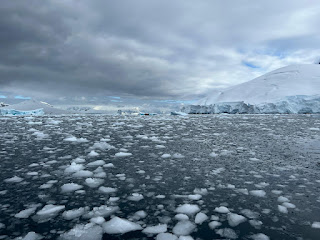I'm not the nostalgic type, but today would have been my Mom's 90th birthday.
I always hate when people say things like that. 'My Dad would have been 133 years old today', or 'Aunt Jane would have been making pierogis for Easter, if she hadn't wandered behind the tractor the day that Uncle Jimmy was backing it out of the barn'.
Also for the record: I'm not religious, I don't believe in the supernatural, and I know - just as sure as everyone 'knows' what happens after we die - that when you're dead, you're dead. The End. No knocks on walls. No secret messages played through the radio. Those 'angels' that you see when you take a video on your cell phone? Those are DUST PARTICLES darting around your house. You don't need an exorcist, you need a vacuum cleaner.
So what, IMO, happens after you die? It will feel EXACTLY as it did all those years before you were born. Same thing, different side of the teeny weeny little slice of consciousness we call life. Remember what that was like? Of course you don't, and you won't know after you die, either.
So why was I compelled to go into the junk closet in the basement, the one with all the things that I need to get rid of but just can't, for whatever reason? And why was I compelled to rifle through the old games and puzzles and pull out a Ouija board, of all things? I cannot tell you why. I just know that it's what I did, on this day that would have been my Mom's 90th birthday.
The thing about Ouija boards is this: when you get a group of people who are putting the teeniest bit of pressure on the little plastic triangle with the hole cut out for spelling purposes, there is some sort of energy that causes the thing to move. I'm not saying that there might not be some clown in the group that is directly responsible for the 'voices from the beyond' e.g. maybe deliberately or subconsciously moving the piece around the board to get to the 'answer' they want. And I certainly don't believe AT ALL that there is a presence from the otherworld guiding the hands to reveal a message. But what I do think is that the collective (will/apprehension/excitement) of the Ouija players allows for the thing (what's it called, anyway?) to move around the board as if by mysterious forces. Kind of like how my fingers often write words on paper, like this, that don't seem to come from my own head.
I digress. There was nobody home but me. There was no earthly reason for me to pull out the Ouija board, especially since I couldn't "play" it the way it was intended. You need more than one person driving. But I took it out of the box. Put it on the table. Put the plastic triangle thingy (I just learned it's called a "planchette". Look it up.) on the board, in the empty space between the letters and the numbers. I take a sip of my tepid afternoon coffee. I rested my fingers very lightly on the edge of the planchette.
I waited.
As I waited, I thought about my Mom. At first, my thoughts went to those last few years of her life, the ones spent in a gradual decline in health, and ending with a last dose of morphine in a nursing home. I try to forget those years but their memory has burned a hole in my brain that can't be repaired. Those memories come up first, every time.
Then I worked backwards. The years after my Dad died, before her Parkinson's diagnosis, when she lived alone in her little home, by herself, for almost 20 years. Stubborn and strong, she kept herself busy with anything she could. Volunteering, working part time in a church office, creating projects for herself. Eventually being a grandma - probably the thing in her life that she most cherished was being a grandma. My fingers tap the planchette.
And before that: the fun years with my Dad, all of the family together. Road trips, day trips, teenage years, swim lessons, piano lessons, arguments around the supper table. Chaos. Life is noisy, messy, and loud - I've come to this realization only lately. Credit the screaming baby on the airplane. Loud and fussy = very much alive. Life is not meant to be quiet, or still. Still life means a bowl of fruit and maybe a dead goose in some oil on canvas from a bygone era. Inanimate objects on a flat canvas - this is not life! Life doesn't stand still, life is constant movement. The planchette still hasn't moved.
All those birthdays we celebrated. The cake, the off key singing. The cards and gifts. Celebrations of life, while we're still alive.
I don't know what I was thinking, that I was drawn to this stupid board. I can remember my Mom without feeling the need to 'channel' her. I have photos I can look at, plenty of memories buried deep in the grey matter that will come out when I need them. She's always there, somewhere, when I need her. Like she always was.
I take my hands off the planchette. Pick up my coffee cup and now it's room temperature. Mom always drank her coffee black.
The planchette moves. I stop mid-sip and see it slide it's way to the bottom of the board.
"Good Bye"
































